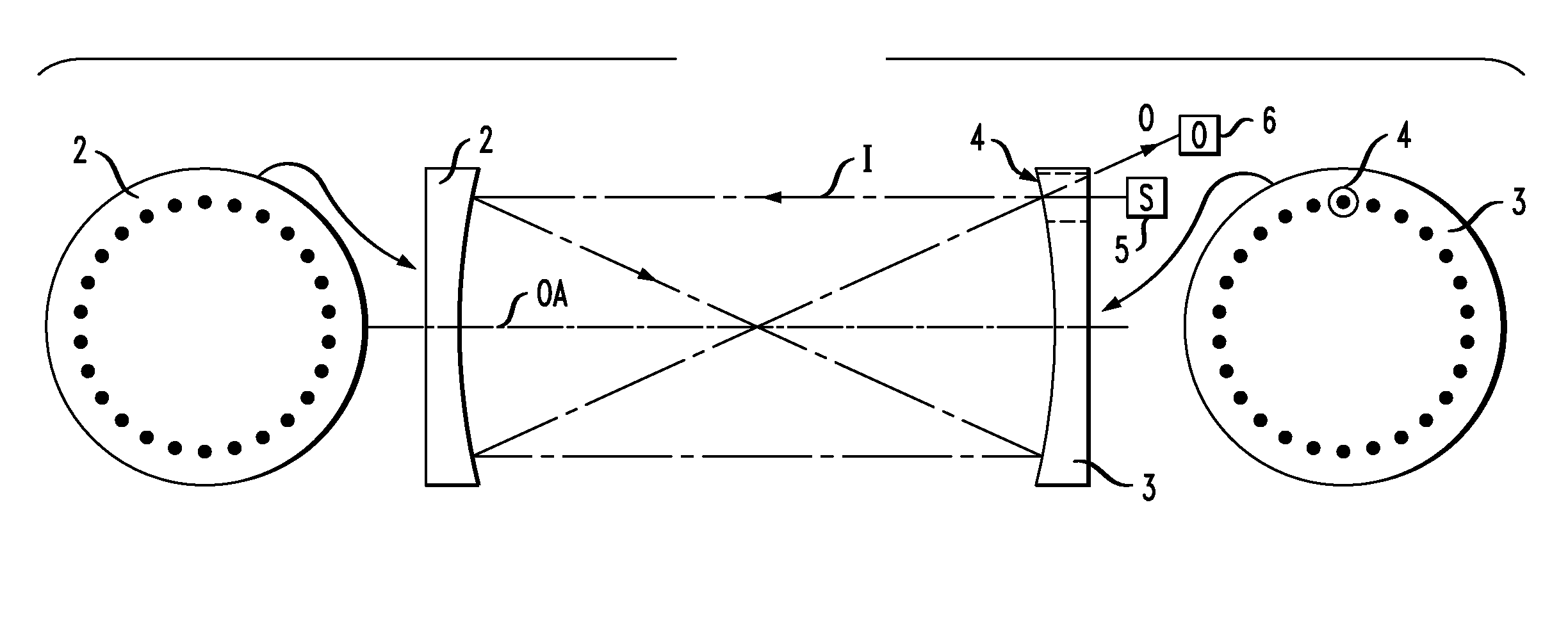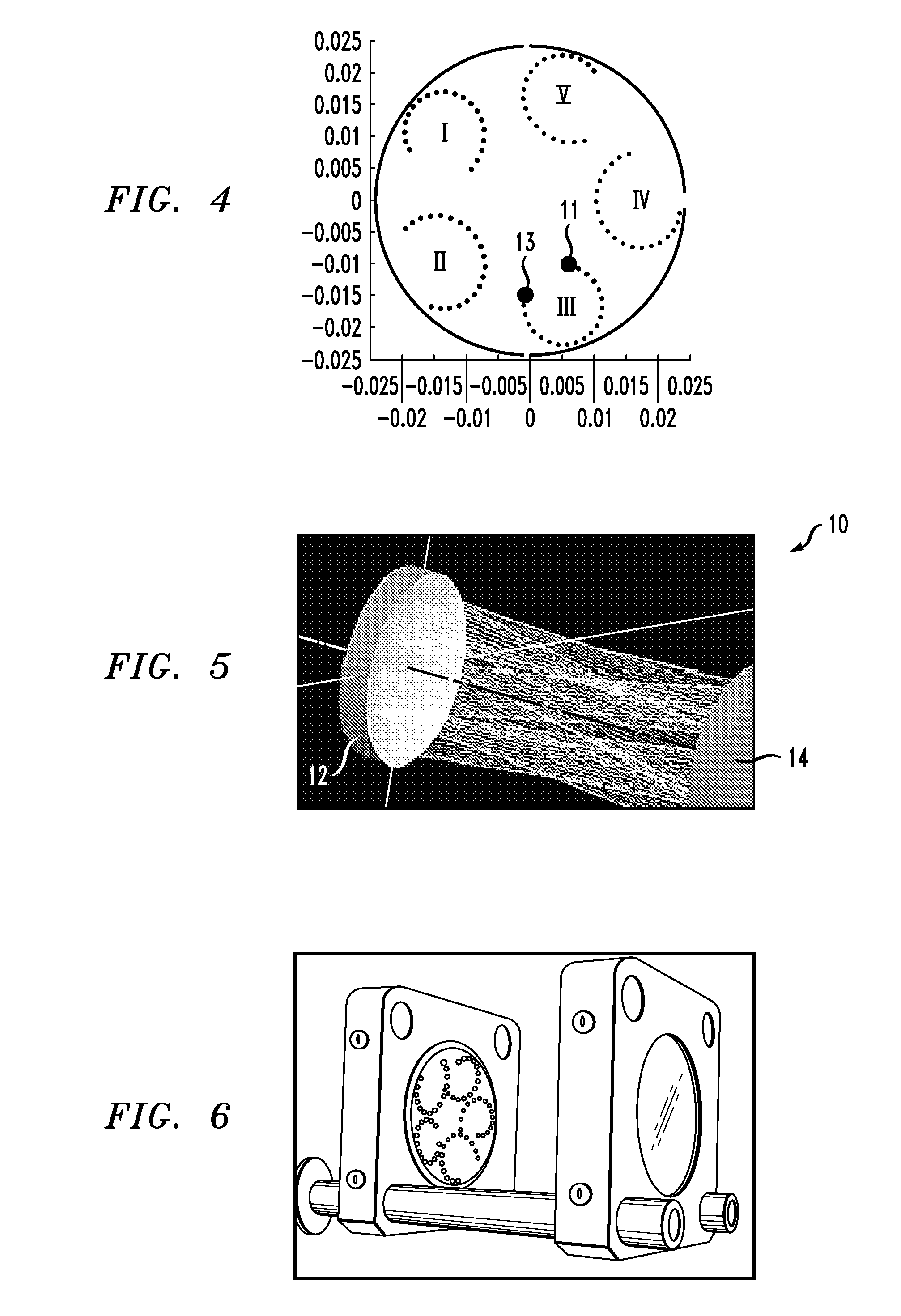Multipass Cell Using Spherical Mirrors While Achieving Dense Spot Patterns
a multi-spot pattern and optical path technology, applied in the field of optical multi-spot cell configuration, can solve the problems of interference etalon fringe pattern, cell limited spot number, and inability to easily transport instruments requiring such a long tube, so as to reduce the separation between adjacent spots, reduce fabrication costs, and reduce the effect of spherical mirrors
- Summary
- Abstract
- Description
- Claims
- Application Information
AI Technical Summary
Benefits of technology
Problems solved by technology
Method used
Image
Examples
Embodiment Construction
[0033]As described above, it has been found that the prior art matrix-based ray tracing methods can contain significant errors after long paths and multiple reflections as a result of using the paraxial and thin lens approximations, unless the spot pattern is bouncing off surfaces that have a very large radius of curvature. For example, at an angle of 5°, the paraxial approximation of θ≈ sin θ is in error by 0.1%, where the more strongly curved surfaces produce even more oblique reflections. Some correction has been obtained in the past by direct ray tracing of the equation-based solution and adjusting the final configuration to match this more exact ray tracing. However, the paraxial and thin lens approximations are retained for this process as well. The presence of these approximations and lack of equation-based designs that match the actual cell designs is considered to have limited the ability to develop other spot patterns that may otherwise provide viable MPC arrangements. In ...
PUM
| Property | Measurement | Unit |
|---|---|---|
| curvature | aaaaa | aaaaa |
| photoacoustic spectroscopy | aaaaa | aaaaa |
| Faraday rotation spectroscopy | aaaaa | aaaaa |
Abstract
Description
Claims
Application Information
 Login to View More
Login to View More - R&D
- Intellectual Property
- Life Sciences
- Materials
- Tech Scout
- Unparalleled Data Quality
- Higher Quality Content
- 60% Fewer Hallucinations
Browse by: Latest US Patents, China's latest patents, Technical Efficacy Thesaurus, Application Domain, Technology Topic, Popular Technical Reports.
© 2025 PatSnap. All rights reserved.Legal|Privacy policy|Modern Slavery Act Transparency Statement|Sitemap|About US| Contact US: help@patsnap.com



